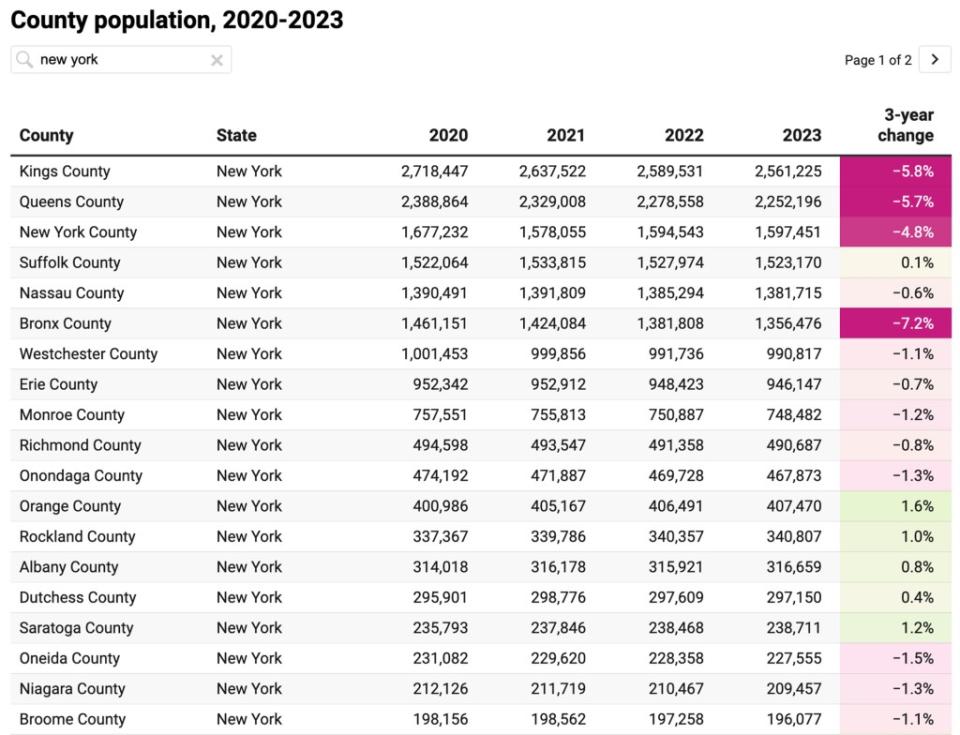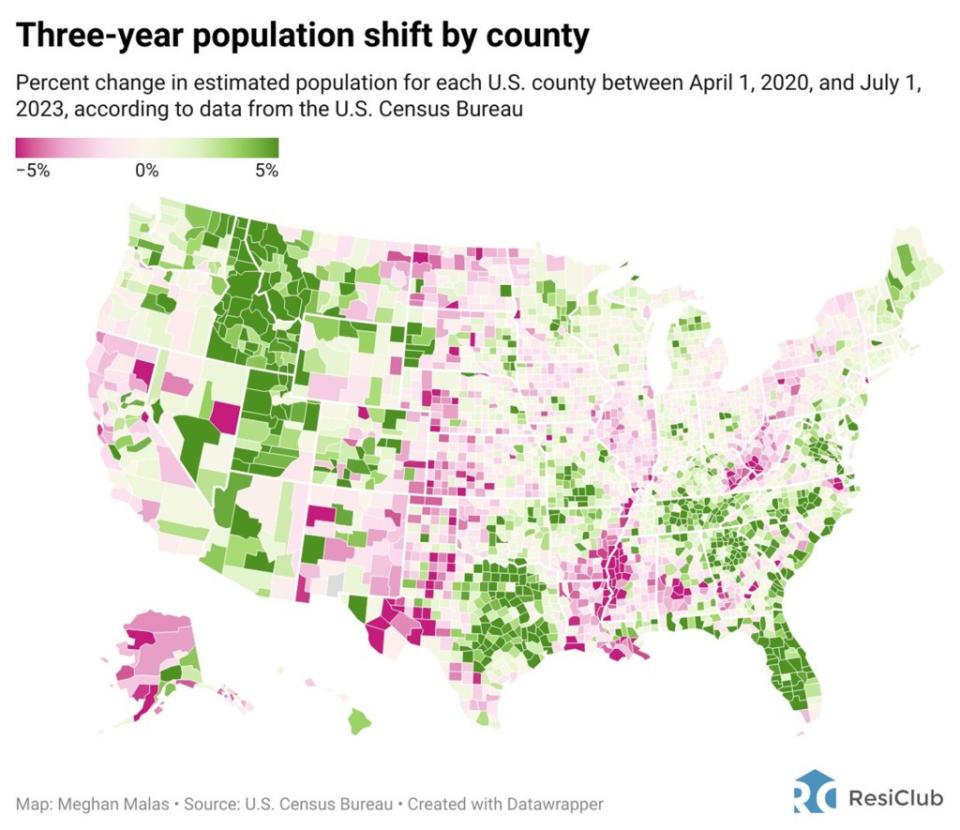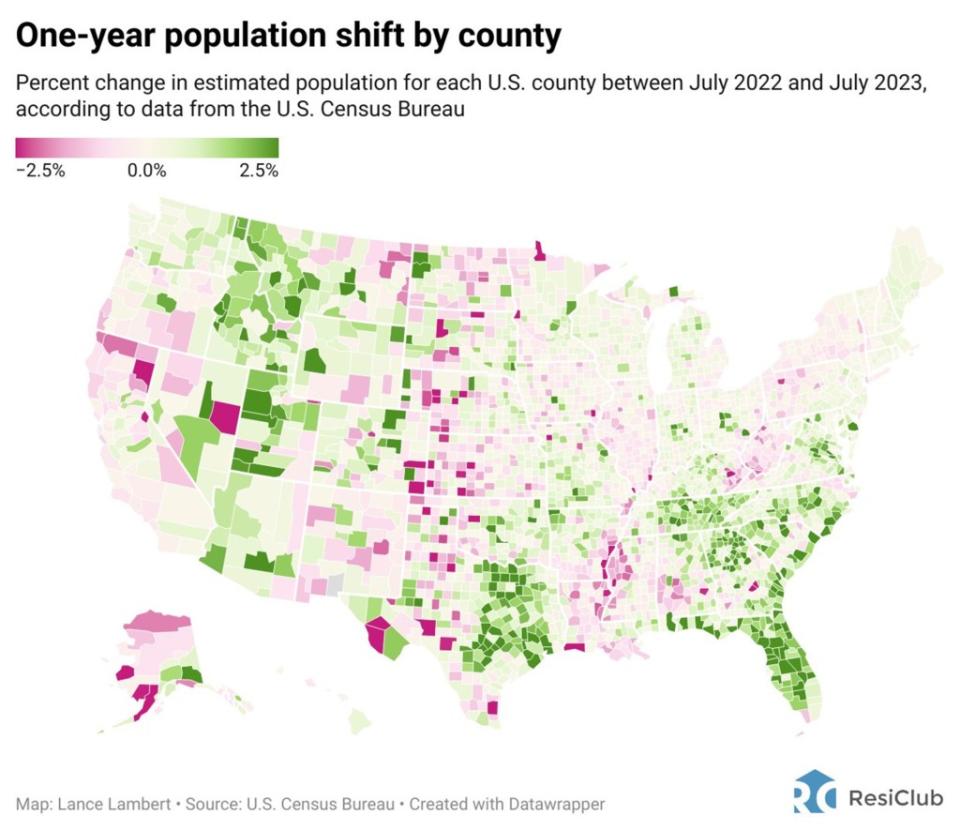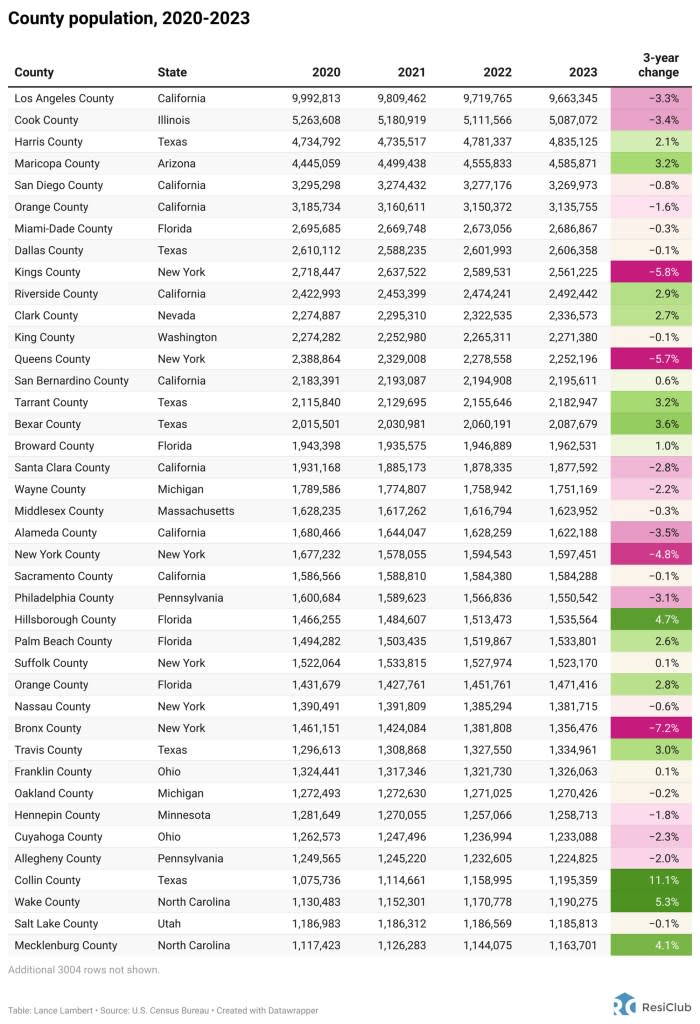4 NYC boroughs lost more people since COVID than 40 of the largest US counties — with the Bronx topping list: study

Four of New York City’s five boroughs have lost a higher percentage of residents since COVID than any of the 40 largest counties in the country, a startling new review of US Census data shows.
Topping the list is The Bronx — with a 7.2% drop in the past three years, according to the analysis of county-level population estimates.
“It’s been good for us — we get more work — but it’s sad,” said Manny Gomez, a 42-year-old Bronx resident and employee of Morgan and Brothers Manhattan, a storage and moving company, in the borough’s Mount Eden section.

“Rent is way higher. It’s going up. People move out of state because their apartments of 10, 20 years get too expensive,” Gomez told The Post on Monday.
“The little guy is getting screwed over. It’s not worth it to stay in the city.”
The Bronx had 1,356,476 residents last year, according to the Census data — down from the 1,461,151 recorded in 2020.
Brooklyn’s Kings County came in at No. 2, suffering a 5.8% drop, and Queens County followed closely behind with a 5.7% decline in residents, according to the review carried out by ResiClub, a news and research outlet that covers the US housing market.
Manhattan’s New York County ranked fourth among the 40 largest counties in the US losing residents, with its population declining 4.8% since 2020, the analysis showed.
“It’s getting harder to live in New York,” said the owner of a U-Haul franchise in Sunnyside, Queens, who only gave her first name, Renna, to The Post — echoing what New Yorkers have been saying for several years.

The cost of living in the city — whether it be soaring prices, rampant crime or the general rat race — is just too damn high for many people, while work-from-home options have made it easier to move out to cheaper, more spacious regions.
And the exodus is apparently continuing.
Gomez said business has been better than ever in the past six months.
Renna agreed, saying her moving business “was going down after COVID, but in the last few months it is going back up.

“So many went out of town in the last few months,” she said.
A poll from the Citizens Budget Commission fewer than two weeks ago showed that just half of all New Yorkers plan to stay in the city over the next five years, and anger over quality of life has skyrocketed since the pandemic — with just 30% saying they’re happy here.
As for the latest census-data crunch, Staten Island suffered a population decline, too, but it was considerably less than Gotham’s other boroughs — at just 0.8% — within the past three years.
“Since the onset of the pandemic, there have been three big population winners: The US Southeast, Mountain West, and East/Central Texas,” said ResiClub’s co-founder, Lance Lambert, of his analysis.

“On the flip side, large high-cost urban markets in the Northeast and West Coast have seen weaker growth or outright population declines.”
While the Big Apple saw droves of locals fleeing, parts of Florida, Texas and North Carolina were among the largest counties in the US to see an influx, the review shows.
The Lone Star state’s Collin County, which covers a portion of Dallas, saw an 11.1% increase in the past three years, while Florida’s Hillsborough County, whose largest city is Tampa, recorded a 4.7% population increase.
Queens Borough President Donovan Richards on Monday blamed the droves of New Yorkers fleeing, at least in part, on the surging cost of real estate.
“Homeownership is out of reach for the next generation. A lot of people are just being priced out,” Richards told The Post.

In the past year alone, nearly 78,000 residents fled New York City — shrinking its population to 8.26 million people, the latest census estimates released last month show.
Still, Richards questioned whether the census figures were inflated in terms of loss of residents in Queens.
“Long Island City is the fastest growing community in the country. There’s definitely a disconnect,” he said, adding more housing was under way or planned for Willets Point and in southeast parts of the borough.
Ken Girardin, research director at the Empire Center for Public Policy said that in the past, the number of foreigners coming here legally, plus births, offset New York City residents leaving for other parts of the region or country.

But he said immigration plummeted in the city during under President Trump, followed by the coronavirus, when the feds imposed stricter policies for foreign entry to tame the deadly virus.
“That disrupted the normal cycle for New York City,” he said.
Still, he said it is “highly doubtful” that US demographers have accurately captured the recent influx of migrants to the Big Apple “because of the disorganized way they are arriving.”
Mayor Eric Adams’ administration also has questioned federal population figures, including as recently as last month, when its said it would “be working with the Census Bureau to adjust’’ its estimates upward.
“New York City has made a remarkable comeback since the pandemic — jobs are at an all-time high, crime is down, and more people than ever want to live here,’’ a rep for the city’s Department of Planning said.
“While more than 180,000 migrants have come to the city seeking care since the spring of 2022, with 64,600 still in the city’s care, this July 2023 estimate does not fully account for changes in this population — our analysis indicates that the city’s population was essentially unchanged between July 2022 and 2023, and we will be working with the Census Bureau to adjust the estimate.”

